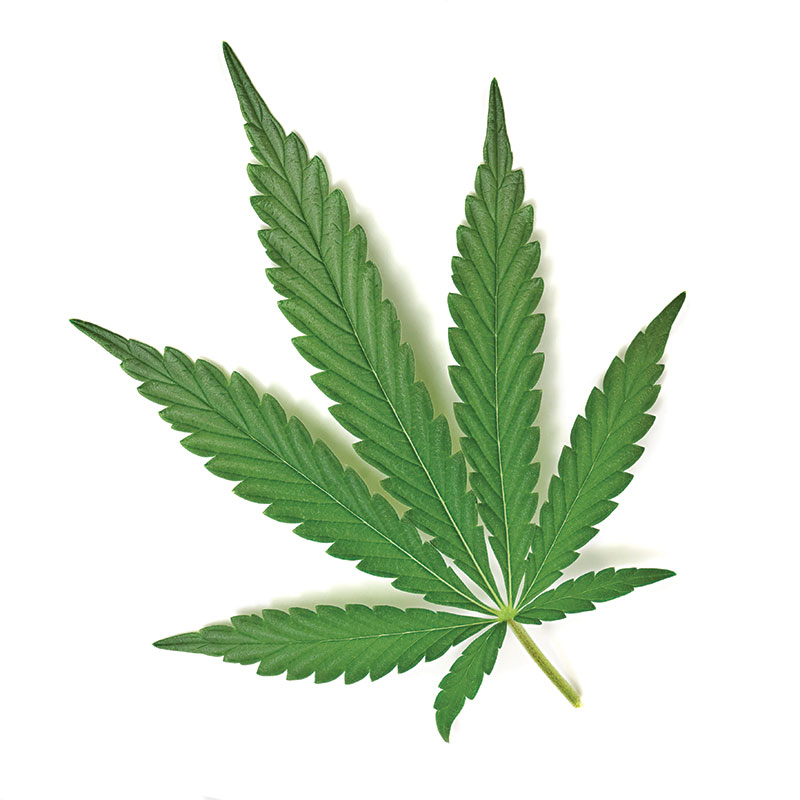 Pundits may be watching our state to see if the legalization of marijuana pays off in taxes, but local parents like Kim Baker have more immediate concerns. With middle school looming, Baker is wondering about how much — and what — to tell her 10-year-old, Jack. “We’ve had the general drug talk,” she explains, “but nothing specific to pot.”
Pundits may be watching our state to see if the legalization of marijuana pays off in taxes, but local parents like Kim Baker have more immediate concerns. With middle school looming, Baker is wondering about how much — and what — to tell her 10-year-old, Jack. “We’ve had the general drug talk,” she explains, “but nothing specific to pot.”
Lisa McConnell-Geisness is more worried about how everyday life — and risks to her child — will change. Will her fourth-grader, Kieran, have to walk past a blaring neon storefront with pot ads on his way to school? And will the fact that recreational pot is legally available to adults mean that kids will have more access, too? Just like all of us, these parents are grappling with the new reality of a culture rapidly changing its views on pot and how those changes may affect our kids.
The basics
According to the Washington State Liquor Control Board (WSLCB), which oversees the new marijuana regulation system, the drug will be highly regulated and only legal for adults to buy in authorized stores, for private consumption. No store can be located within 1,000 feet of an elementary or secondary school, playground or similar place. The WSLCB rules limit stores in physical size (no “megastores”) and also regulate the size of signs and the look of storefronts, which must not have products visible from the street.
A big parental concern is “consumables” — treats such as brownies, soft drinks and candy containing tetrahydrocannabinol (THC) — the active chemical in marijuana. Those concerns were given fuel earlier this year when researchers at the Rocky Mountain Poison and Drug Center in Colorado announced that nearly half of all cases of emergency-room visits for kids younger than age 12 for “unintentional ingestion” of marijuana in the past few years involved consumables.
Washington state aims to avoid such problems by having strict labeling and packaging rules, WSLCB communications director Brian Smith says. In addition to requiring that packaging must be “child-resistant,” there are also strict limits on appearance “You can’t have anything with cartoons or that would appeal to kids,” Smith says.
Yes, you still have to have "the talk"
Despite these precautions, experts still recommend that you talk to your tweens and teens, both about pot and about the state’s new rules. “Don’t wait,” says Dr. Leslie Walker, chief of the adolescent medicine at Seattle Children’s and a professor of pediatrics at the University of Washington (UW). She sees existing legal medical marijuana stores as an opportunity to raise the topic now. “[I]f they see a green cross,” she suggests, “let them know what that means.”
However you start the conversation, you need to have it, says Dr. Kevin Haggerty, associate director of the Social Development Research Group (SDRG) at the UW. Haggerty points to recent data from the Washington State Healthy Youth Survey that showed that kids whose families have not communicated about marijuana or set clear expectations about use were nearly three times more likely to have tried pot by the eighth grade. They were also three times more likely to be “frequent users” by the 10th grade.
Legal ≠ safe ≠ smart
So, how should you approach it? “Small talks over time are always better,” Walker says. And you need to keep talking, she adds. “Adolescent brains are developing rapidly. Just because they understood and were not interested in drugs at the beginning of sixth grade doesn’t mean they will remember and understand the risks and benefits six months later.”
Haggerty suggests that, at some point, you should bring up one important risk to kids using marijuana — the law. “Marijuana is still illegal for people under 21 to consume,” Lauren McClane, a public defender at the King County Department of Public Defense, says. What’s more, McClane expects to see fairly rigorous enforcement of the prohibition on underage use.
You will probably need to explain to your child why legalization for adults doesn’t mean the drug is safe for kids. The tween though teen years are “prime” brain development time, Walker notes, and that development is affected by THC. Pot use has also been linked to educational and emotional problems such as depression, although research isn’t clear whether the use is causing the depression or is just a symptom. Other impacts of marijuana use, reported by the National Institutes of Health’s National Institute on Drug Abuse, include negative effects on attention, motivation, memory and learning that can last for days. While much research remains to be done on the health effects of THC in adults, Haggerty says, “the evidence we have is clear that it is not safe for kids.”
Also, despite what you may have heard, marijuana is addictive, experts say. In fact, Haggerty notes that pot is the No. 1 drug kids go into treatment for in our state. Walker dismisses the idea that marijuana addiction is somehow less serious than other addictions. Working with addicted kids, she has seen pot cause the kinds of physical withdrawal and cravings that make kids continue to use even in the face of serious negative consequences.
The scariest part? Most of the kids she sees first tried the drug at about the age of 11.
Tough questions
What if your child asks about your own drug use? For Walker, “[A] parent telling their child about their own drug-using years is almost always a mistake.” Even if you make it sound terrible, she says, kids this age still look up to their parents and will think, “My parent used drugs and they are OK, so I will be, too.”
Haggerty, who has studied the effects of parental and family influence on drug use, says parents are the single most important factor in deterring underage use. Recent data from the Washington State Healthy Youth Survey supports this, showing that kids whose parents had “favorable attitudes” toward pot use were five times more likely to have used it by eighth grade and nearly eight times more likely to be “frequent” marijuana users by that time.
Research suggests an answer to another question you may have. Remember the kid in high school whose parents let her drink with them, thinking it would teach her “responsible use”? Proponents of this practice, sometimes called “harm minimization,” often point to countries where laws regarding alcohol use by kids are far less strict as examples that the theory is sound.
Research reported in a 2011 study by Haggerty’s colleague and director of SDRG, Dr. Richard Catalano, compared kids in places practicing “zero tolerance” and “harm minimization” and found that adult-supervised use of alcohol led to higher levels of “harmful alcohol consequences.” While his work focused on alcohol, Catalano agrees with Haggerty about family impact. “We know that parent and sibling use is related to child use,” Catalano says, “and that parental permission to use is [also] related.”
Bottom line? Catalano recommends that parents send a clear “don’t use” message to ensure the negative impacts of our new marijuana scheme don’t extend to our most vulnerable — our kids.
Kathryn Russell Selk is a freelance writer and appellate public defender. She lives and works in Seattle and agonizes about having “the talk” with her 10-year-old (and someday, her 4-year-old).
RESOURCES
- - Walker and Haggerty have written a free parent’s guide to preventing underage marijuana use, released by SDRG and Seattle Children’s.
- - The National Institutes of Health’s National Institute on Drug Abuse has a publication, “Marijuana: Facts Parents Need to Know.”
- - Seattle Children’s has a substance abuse program for kids.
- - The state Liquor Control Board website has a section about Initiative 502, the legalization law. You can find the answers to frequently asked questions here.
Are you addressing pot edibles?
The tales of middle school and high school students ingesting pot edibles and ending up at the hospital are fact, not rumor. Officials at Seattle Public Schools (SPS) have seen an increase in edible consumption since medical marijuana became legal in Washington in 2012, finding lollipop sticks with brand names and candy bar wrappers purchased at legal dispensaries, says Lisa Davidson, manager of prevention and intervention at SPS.

“When I talk to young people, they say, ‘It’s legal now, it’s not a problem or a big deal.’ They don’t understand the potency specific to edibles [often stronger potency and longer-lasting effects than smoked or vaped pot]. We don’t want to teach them how to use safely, but we want them to know if they eat a whole pot candy bar, they are going to the hospital. We’ve seen panicking and vomiting teens who couldn’t breathe and called ambulances,” Davidson says.
Especially now that pot is recreationally legal in this state, parents shouldn’t have edibles out and available for children and teens, says Leslie Walker, M.D., codirector of the Adolescent Substance Abuse Program at Seattle Children’s Hospital. “Kids get their marijuana from other kids or from their home. Parents are the most important definer of whether or not their kid is going to use drugs.”
As 2015 gets under way, commit to talking about pot edibles to your kids in the same way you discuss other drugs or risks. “They are going to make a decision about taking pot edibles without their parents there, out in the world. Kids do a much better job if they talk with their parents about it,” Walker says. For younger children, it’s enough to say, “It can hurt you, and it’s illegal, and we have family rules because we love you,” Davidson recommends. For scripts for tweens and teens, go to starttalkingnow.org and drugfree.org.
— Nancy Schatz Alton











